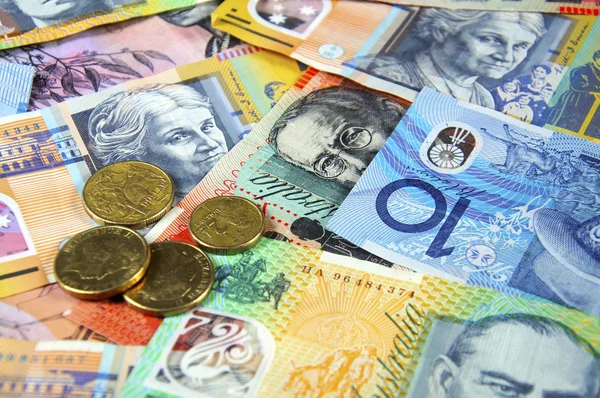The Australian Dollar (AUD) faced renewed selling pressure on Tuesday, extending its losses against the US Dollar (USD) after the Reserve Bank of Australia (RBA) released its July Meeting Minutes. The AUDUSD pair drifted lower, reflecting a market reaction to the central bank’s growing concerns over inflation and cautious stance on future monetary easing.
The RBA Minutes revealed that the board believes further interest rate cuts will likely be needed “over time,” though officials remain reluctant to act too quickly. Instead, the central bank favors a strategy of waiting for clearer confirmation that inflation is indeed decelerating. The RBA has already implemented three rate cuts across four recent policy meetings, and policymakers voiced concern that any further easing must be “cautious and gradual,” especially given the uncertain global economic environment.
Traders Brace for US-China Tariff Deadline
Meanwhile, global market sentiment remains under pressure as investors keep a close eye on the looming tariff showdown between the United States and China. Washington has set a hard deadline of August 1, after which new tariffs are expected to take effect unless a deal is struck. According to US Commerce Secretary Howard Lutnick, the US will enforce the new tariff rates regardless of whether negotiations continue beyond the deadline.
This development has heightened market anxiety, especially for export-sensitive currencies like the Australian Dollar, which is often used as a proxy for China due to the strong trade ties between the two nations. Any deterioration in China’s trade dynamics or broader economic conditions typically reverberates across Australian markets, especially commodities.
PBoC Keeps Rates Steady but Risks Remain
Adding to the cautious tone, the People’s Bank of China (PBoC) left its benchmark one-year and five-year Loan Prime Rates (LPRs) unchanged at 3.00% and 3.50%, respectively. While the decision was widely anticipated, it signaled Beijing’s intent to remain measured in its stimulus approach, even as certain sectors of the Chinese economy begin to show signs of strain.
Data from China this week showed that GDP growth slowed to 5.2% year-over-year in Q2, down slightly from 5.4% in Q1 and just shy of the 5.1% market expectation. Retail sales rose 4.8% YoY in June, missing forecasts, while industrial production posted a stronger-than-expected 6.8% gain, reflecting a mixed economic picture. This uneven data adds complexity to the RBA’s outlook, especially as Australian exports rely heavily on Chinese demand.
US Dollar Rebounds Despite Fed Political Heat
While the Australian Dollar remains subdued, the US Dollar Index (DXY) rebounded to around 97.90 after dropping more than 0.50% in the previous session. The greenback is finding support amid stronger-than-expected consumer sentiment and mixed signals from the Federal Reserve, despite an increasingly heated political atmosphere.
The University of Michigan’s preliminary Consumer Sentiment Index for July rose to 61.8 from June’s 60.7, exceeding expectations. This uptick suggests that US consumers remain cautiously optimistic, even as inflation pressures and trade fears continue to loom.
Fed Caught in the Political Crossfire
The Federal Reserve finds itself at the center of political controversy as President Donald Trump reportedly considers removing Fed Chair Jerome Powell—a rumor he later denied via a Truth Social post. The drama intensified after Congresswoman Anna Paulina Luna formally accused Powell of perjury over matters linked to the Fed’s renovation plans, further fueling concerns about the Fed’s independence.
This political noise has unsettled markets, which typically prize central bank autonomy. Traders are now struggling to price in rate cut probabilities amid conflicting views from key Fed officials.
Diverging Fed Views Add to Uncertainty
Several Federal Reserve officials have expressed divergent opinions on the path forward for US monetary policy:
FOMC Governor Adriana Kugler argued that rates should remain elevated for the time being due to inflationary pressures stemming from tariffs. She emphasized the importance of maintaining restrictive policy to manage inflation expectations.
San Francisco Fed President Mary Daly, however, expressed support for a more balanced approach, stating that two rate cuts in 2025 would be “reasonable” but warned against acting too late.
In contrast, Fed Governor Christopher Waller advocated for an immediate rate cut at the July meeting, citing increasing economic risks. He cautioned that delaying action could require more aggressive cuts later on.
These diverging views have muddled market expectations, with traders now unsure whether the Fed will opt for preemptive easing or stay the course amid rising inflationary concerns.
Australian Dollar Faces Headwinds on Multiple Fronts
With the RBA committed to a wait-and-see approach and the Fed in disarray, the Australian Dollar remains in a precarious position. Compounding the issue are broader concerns about global demand and trade stability.
A more dovish RBA combined with potential resilience in the US Dollar could put continued downward pressure on the AUDUSD pair in the coming weeks. While commodity prices and Chinese data will continue to influence the Aussie’s trajectory, policy divergence between the RBA and the Fed will likely be the dominant force driving currency flows.
Global Risk Sentiment Remains Fragile
Market risk sentiment continues to deteriorate amid overlapping geopolitical, trade, and central bank risks. China’s Commerce Minister Wang Wentao recently highlighted the importance of maintaining stable US-China trade relations, describing mutual benefit as the core of their economic ties. Yet, the escalating rhetoric from US officials and the hard August deadline suggest that tensions are likely to escalate before any de-escalation takes place.
A breakdown in talks or the imposition of new tariffs could trigger renewed volatility in global equity and currency markets. For the Australian Dollar, such an outcome would likely prompt further losses as risk aversion takes hold.
Conclusion: AUD Remains Under Pressure Ahead of Pivotal Events
In summary, the Australian Dollar is facing a perfect storm of domestic and international headwinds:
The RBA is signaling further rate cuts, but only after inflation slows convincingly.
The Fed remains deeply divided amid political pressures and tariff-induced inflation risks.
US-China tariff tensions continue to rise, placing Australia’s export-dependent economy at risk.
Mixed Chinese economic data and unchanged PBoC policy reinforce caution across Asia-Pacific markets.
Unless there is a major breakthrough in trade negotiations or a dovish shift from the Fed, the path of least resistance for AUDUSD appears to be lower in the near term.
Disclaimer: This blog is for informational purposes only and does not constitute financial advice. Always conduct your own research and consult a professional advisor before making investment decisions.
[sc_fs_multi_faq headline-0=”h2″ question-0=”Why is the Australian Dollar falling?” answer-0=”The Australian Dollar is under pressure due to dovish RBA signals indicating future rate cuts, global trade tensions, and strong US Dollar recovery amid Fed-related political developments.” image-0=”” headline-1=”h2″ question-1=”What did the RBA Meeting Minutes reveal?” answer-1=”The RBA Minutes showed that the board believes further rate cuts are warranted over time but prefers to wait for confirmation that inflation is slowing before acting.” image-1=”” headline-2=”h2″ question-2=”How does China’s economic performance affect the AUD?” answer-2=”Since China is Australia’s top trading partner, any slowdown or strength in Chinese growth directly impacts demand for Australian exports, thereby influencing the AUD.” image-2=”” count=”3″ html=”true” css_class=””]









